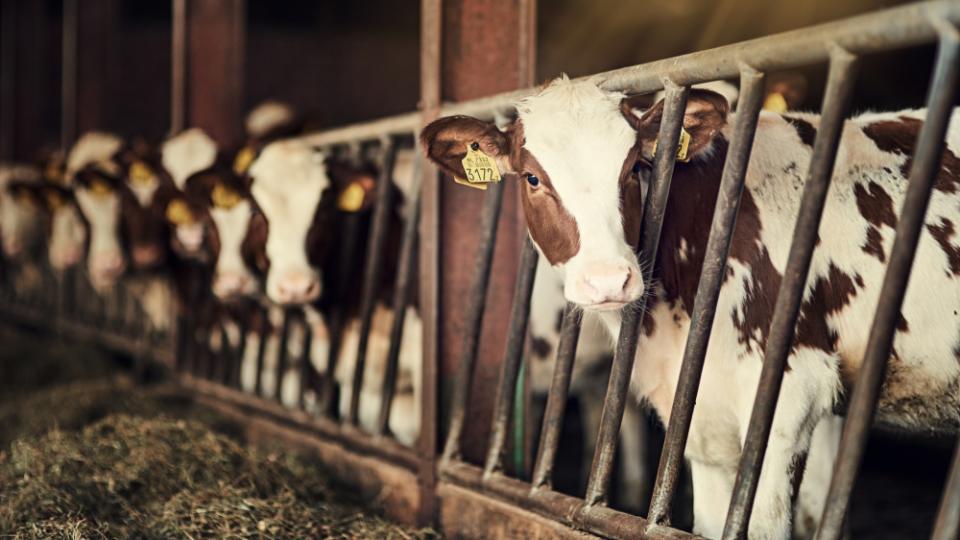Cattle Feeding Tips: All About Feeding Calves & Cattle
 Cattle Feeding Tips: All About Feeding Calves & Cattle
Cattle Feeding Tips: All About Feeding Calves & Cattle

Did you know cows chew their partially digested food for up to eight hours a day?
When they do swallow, the rumen compartment in their stomach can hold up to fifty gallons of food, which is good because cows eat about forty pounds of food a day. This immense need for calories isn't easy for farmers to meet, especially when you're running a large operation.
To get calves off to a healthy start in life, cattle need a very specific feeding process that is based on the kind of cows you are raising and the amount that you want them to grow. Read on to learn all you need to know to ensure you're raising the highest-quality cattle possible.
If you're in 4H, or you're just starting out with your cattle operation, here is a great article all about cattle feeding:
The Difference when Feeding Cattle
Cows require very specific minerals and the right milling and moisture levels. They are also affected by the weather, the management of the feed yard, and the number of cows in the lot.
Calves should be fed at the same time every day, or at least within fifteen minutes of it. They should also be fed about the same amount every day, or within .2 lbs. This is to ensure they grow at a steady rate.
Adjusting Your Bunk
A 'bunk' is the term for the feeding trough that cows eat from. If it isn't placed at the right height, then some smaller calves may not be able to feed. In the past, large calves have been standard, but today many smaller calves are entering feedlots and aren't able to reach the bunk.
Another mistake people make when it comes to the bunk is not identifying the calves that don't go to the feeder. These cows need to be put in a smaller pen to ensure they get the nutrients they need without all of the other cows around.
Most cows eat from self-feeders that can sometimes get clogged during spring rainy season. If the wet feed sits in the feeder, then it can start to mold and cows won't eat it.
Pay Attention to What's in the Feed
Selecting a feed is about much more than the price and nutrients, the moisture content of the food is important too. If cows are eating a feed with high-moisture levels, this can cause bloating.
To prevent your cattle from over-feeding, you should make sure their diet has enough ruffage and fibre.
Also, you should consider adjusting the salt content of your cow's feed if you want to make it eat more or less. Salt is a great natural intake limiter since cows will only eat so much of it before they stop eating.
The Importance of Minerals
Mineral supplements are an important part of the feeding process. If a pregnant cow is fed more than the required amount of minerals while they are gestating, their calves do better on average.
While you may not think additional minerals are necessary, they can account for your calves being up to fifty pounds heavier when they are fully grown. These supplements are typically given in the last ninety days of gestation.
Separate Your Cattle
Cattle are usually separated in multiple ways to ensure that they all grow to the best weight possible. First, you could separate the castrated and non-castrated calves if possible.
This is because the first few days after castration will be difficult for the calf and it won't want to be bumped around by more aggressive calves that haven't recently undergone surgery.
Many farmers also separate their calves by weight. If there are large calves in the pen with small ones, the large calves can be pushy and dominant leading to the smaller cows to eating less than they need.
Cattle Feeding Tips
Cattle feeding isn't straightforward. Check out these tips for helpful advice.
1. Calves should be in a small pen when they are first weaned. This is to ensure that they are able to find their food and water source.
2. Calves should eat a diet that is familiar to them. They need to have a consistent intake of vitamin and minerals.
3. Feed should be mixed and blended to create a uniform product so that they get the right mix of minerals.
4. Receiving pens for cows should never be near the shipping pens because this can stress the animals out and cause them to eat less.
5. If wild cattle are added into the mix, farmers typically don't put them in with bunk-broke cattle. If they don't know how to use the bunk yet, they will avoid going to it since it will be crowded. To ensure they get the sustenance they need, they are put in a short pen with extra feed troughs.
6. When it is time to increase the feed intake of your cattle it should be done gradually by feeding them one percent of their weight and then increasing it slowly until the cow is able to eat as much as it wants, at which point, it can switch over to a self-feeder.
Selecting a Supplier
When you purchase feed for your cattle, you have a lot of options. Including your local Lakeland Co-op.
When you buy from a Co-op, you are investing in your local economy to create jobs in your community and to support great causes like 4h!
More Helpful Articles
Now that you know everything there is to know about cattle feeding, you will raise happier and healthier cows.
If you're in need of feed, tack or anything else for your farm or ranch, stop by our Lakeland Co-op Agro Centre today!